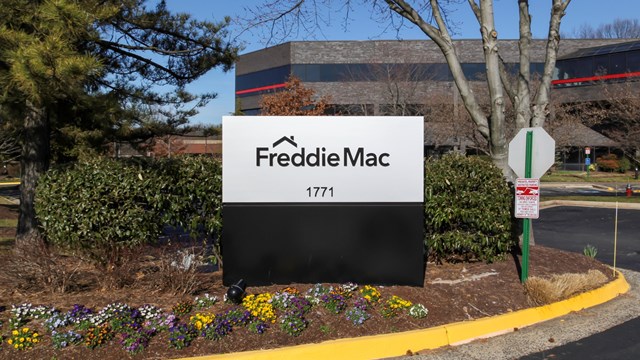In 1991, the American Institute of Certified Public Accountants (AICPA) issued its Guide to Audits of Common Interest Realty
Associations, more commonly referred to as the CIRA Guidelines. Much controversy followed this event as professional organizations of every stripe either encouraged boards to comply as soon as possible or warned them of serious consequences if they did not. As usually happens when boards are confronted by such momentous choices, the status quo (i.e., do nothing) solution won out. While I agree that a cautious approach to this important change probably was warranted at the time, I cannot ignore its principal by-product. The prevailing recommendation to delay full compliance with the new reporting guidelines legitimized the myopic planning horizon of most boards.
The Problem
CIRA guidelines call for an assessment of the useful life remaining in a building's major components, and a cost proposal and projection for any anticipated repairs or upgrades. As buildings age, their skin and internal organs wear out with ever-increasing frequency. The longer a board postpones repairs, or worse, ignores this relentless deterioration, the greater the risk of an expensive emergency. Murphy's Law ensures that all such emergencies will occur during the wrong season and when the co-op can least afford them. Certainly no board can avoid emergencies entirely. But an on-going program of preventive maintenance and replacement, coupled with a comprehensive budget that includes monthly contributions to the building's reserve account, can reduce both the number and severity of the emergencies that do happen.
So why do most boards still bounce from crisis to crisis? It is an unfortunate fact that most co-ops are run by groups of unpaid volunteers whose expertise lies largely outside the field of real estate and property management. During their precious evening hours, these well-intentioned individuals must make the tough decisions that other business executives get paid to make during normal working hours. Afterwards, these same board members must endure the criticism, second-guessing or outright wrath of other shareholderssome of whom are their friends or neighbors. Is it any wonder that politics and private agendas sometimes get in the way of clear thinking? Of course not. But avoiding hard decisions today will make them even harder tomorrow.
The Solution
Like the executives of any successful business, board members need to define a clear goal for their buildings and a workable strategy for attaining that goal. Though this may sound like something from a self-improvement tape, it is nonetheless true. It is unlikely that anyone will get from Point A to Point B if they don't know where Points A and B are, as well as at least some idea of what they might need to do along the way. Goals and strategies will vary from board to board. Every co-op or condo has its own location, a different size and shape, a diverse shareholder mix, and a distinct set of advantages and problems that combine to form that building's special identity. But inherent in this diversity is the synergism that can forge a truly successful long-range planif the board has the foresight to create a new vision for its co-op and the courage to do what is necessary to achieve it.
Six Steps to a Better Future ffb
The first step toward the formation of a long-term plan is internal. Each board member must adopt the mantra My co-op is a business, and I will run it like one and repeat it in the mirror ten times every morning and once more at the start of every board meeting. Hopefully, that regimen will cause every board member to employ the same sound judgment that they use every day in their real job.
As a second step, the board should hire a good engineer to complete a top-to-bottom inspection of its building. The cost of such an inspection will fall between $3,000 and $20,000, with most studies running less than $5,000. Tell the engineer that this inspection will form the basis for the board's new long-term plan. Also, ask the engineer to segregate his or her recommendations into four categories:
(a) work needed now
(b) work needed over the next five
years
(c) work needed during the next
five to ten years
(d) work most likely needed after
ten years
Lastly, ask the engineer to estimate the cost of each project and to prioritize those in (a) and (b).
The third step is to sit down with the building's managing agent and accountant to review the co-op's performance over the last five years. Though no one can predict the future from the past, everyone can learn from it. Analyzing the co-op's recent operating and financial history will highlight trends, uncover problem areas, and perhaps suggest better ways to deal with emergencies in the future. In addition, input from both the managing agent and the accountant will be essential in setting a meaningful budget and a realistic schedule for any work recommended by the engineer.
The fourth step is to poll the shareholders to gather opinions and comments regarding pending budget priorities, spending plans, and policy changes. Knowing the relative importance and sensitivity of various issues among the shareholder body will help board members make reasonable decisions. It is always impossible to satisfy everyone. However, if everyone feels that their concerns were heard and fairly considered, they will be more willing to support whatever decisions the board ultimately makes.
The fifth step is to study all of the information and advice that the board has assembled and then to define a set of specific goals and strategies for the building. Examples might be:
(a) To sustain higher apartment values relative to neighboring properties through cost control, cosmetic improvements, and regular preventive maintenance;
(b) To provide a consistent level of service by raising the quality and hours of building staff. Increased cost to be split between an immediate maintenance increase and a new policy and detailed schedule of charges for work done inside apartments.
(c) To build a working capital reserve equal to three month's of budgeted operating expenditures plus a separate reserve for roof and boiler replacement scheduled for the year 2000. Funding levels to be achieved through monthly budget allocations and regular maintenance increases to keep pace with inflation.
(d) To complete within three years all of the necessary building repairs and system upgrades which were abandoned by the sponsor, with funds coming from a mortgage refinancing at a lower interest rate before the end of this year.
The sixth step is to implement the new planand then stick to it. This certainly will be the toughest part of the entire process. Therefore, board members should educate as many shareholders as possible about their plan, why and how it was developed, and how each shareholder can help make their co-op a better place. The board should involve newer and potential board members in the actual planning and decision-making to ensure continuity of direction during future years. In addition, the board might create a newsletter to keep shareholders informed on a regular basis. Frequent communication prevents unfounded rumors from spreading and undermining the effectiveness of the board's strategy.
Long-range pla 9ca nning is never easy. But, like anything else worth the effort, it can generate tremendous rewards. Those co-ops and condos that plan their future will have one they can enjoy. Those that don't will be battered by the constant struggle to survive. The choice is up to you.
Patrick B. Niland is the managing partner of First Funding, a commercial mortgage brokerage firm with offices in Rochester and New York City.







Leave a Comment